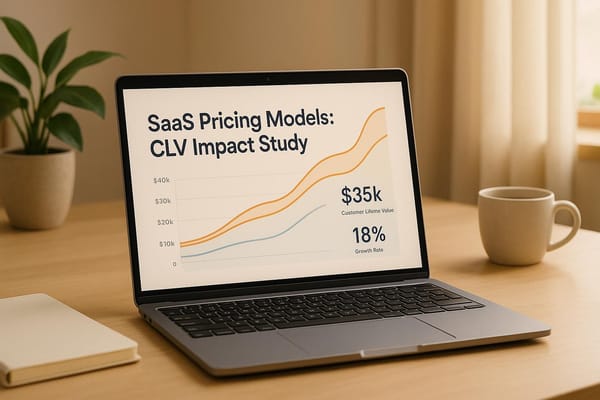How User Feedback Refines Value Propositions
User feedback is vital for refining value propositions, ensuring products meet customer needs, and driving business success.

User feedback helps businesses improve their products by identifying what customers truly need. Without it, even advanced products can fail to connect with users. Here's how feedback strengthens value propositions:
- Closes the gap between technical features and customer needs.
- Uncovers pain points and priorities directly from users.
- Refines messaging so it resonates with the audience.
- Prioritizes features based on user importance.
Testing Your Product and Getting Feedback: Crash Course Business Entrepreneurship #7
Building a Feedback Collection System
A well-structured feedback system transforms scattered comments into actionable insights that can refine your value proposition. Without organization, valuable feedback risks being lost in a sea of emails, calls, forums, and social media posts. A centralized approach ensures all input reaches the right teams.
"A customer feedback system is a set of processes that helps you collect, track, and respond to customer feedback. A good feedback management system will allow you to solicit feedback, gather it in one place, and then analyze it to pull out insights. After that, you want to act on your feedback - use it to inform product decisions." - Kareem Mayan, Co-Founder, Savio.io [3]
Centralization and consistency are the cornerstones of effective feedback collection. When feedback is scattered across multiple platforms, it becomes challenging to identify recurring themes or prioritize areas for improvement. A centralized system makes it easier to analyze data and turn it into meaningful action.
Setting Clear Goals for Feedback Collection
Before diving into feedback collection, it’s essential to define your goals. What exactly do you need to learn about your value proposition? Vague objectives often lead to generic questions and unhelpful answers. Instead, focus on specific, measurable goals that will guide your entire feedback strategy.
Start by pinpointing gaps in your current value proposition. For instance, do users struggle to see how your technical features solve their problems? Or do they understand the benefits but hesitate due to pricing concerns? Each gap requires a tailored approach to gathering feedback.
Measurable, time-bound goals are key. Rather than aiming for broad targets, set clear objectives that can be tracked over a specific period. For example, look at metrics like feature adoption rates or satisfaction scores, alongside qualitative insights that reveal how customers describe their needs and experiences.
Align these objectives with your broader business goals. If your company is entering new markets, focus on understanding how your value proposition resonates with different audiences. If you’re rolling out new features, collect feedback on whether these additions clarify or complicate your message.
Document these goals and share them across teams. When everyone is on the same page, sales teams can ask pointed questions during demos, support staff can dig deeper into user issues, and product managers can design surveys that yield actionable insights.
Selecting the Right Feedback Methods
Once your goals are clear, choose feedback methods that align with what you want to learn. Different methods provide different insights, and technical products often require a mix of approaches to fully understand user needs.
- In-app feedback tools: These capture real-time reactions as users interact with your product, highlighting moments of confusion or delight.
- User interviews and focus groups: Ideal for exploring complex technical needs, especially for B2B products where decisions involve multiple stakeholders.
- Customer support interactions: Analyzing support tickets, chat logs, and call recordings can reveal recurring issues and areas where your value proposition may fall short.
- Social media and reviews: These offer unfiltered feedback in customers' own words, helping refine the language you use to communicate your value.
- Analytics and behavioral data: Tools like heat maps and feature usage stats show what users actually do, complementing what they say in feedback.
For example, Udemy used contextual surveys to segment its audience by language and location. This revealed that many non-English-speaking users were choosing courses in English, leading to the addition of automatic captioning to make content more accessible worldwide [4].
The most effective systems combine multiple methods to paint a complete picture. Start with broad surveys to spot trends, then use interviews to dive deeper into specific issues. Continuously monitor channels like support tickets and social media, and use analytics to validate whether feedback-driven changes are working.
Timing is just as important as the method. Gather feedback at critical points in the user journey - right after signup, following feature adoption, before renewals, and after support interactions. Each moment offers unique insights into how your value proposition performs.
Finally, consider your audience. Technical users, like engineers or decision-makers, may prefer detailed interviews or beta testing over generic surveys. Tailor your methods to suit their preferences and communication styles.
Next, we’ll explore how to analyze and rank the feedback you’ve collected to uncover the most impactful insights.
Analyzing and Ranking Feedback
Turning raw feedback into actionable insights is no small feat. The way businesses analyze and prioritize customer input can make or break their ability to refine their value propositions. Without a clear system in place, essential feedback risks being overlooked, buried in spreadsheets, or lost in the shuffle of endless meetings.
"Sentiment analysis transforms scattered feedback into actionable insights, helping you spot trends, solve problems, and create experiences that keep customers coming back." - The Fullstory Team [6]
The key lies in transforming raw user input into strategic actions that enhance your product's appeal. This involves blending customer comments with behavior data and using structured frameworks to prioritize insights. Once you have a centralized system for collecting feedback, the next step is to extract and rank insights that can directly improve your value proposition.
Methods for Finding Key Insights
Customer feedback generally falls into two categories: what customers say and what they do. Surveys, support tickets, and direct comments tell one story, while behavioral data - like clicks, time spent on pages, and drop-off points - sheds light on another. Combining these perspectives offers a more complete picture.
Sentiment analysis plays a pivotal role here. By using natural language processing (NLP), it can decipher emotions and intentions behind customer comments. This goes beyond simply classifying feedback as positive or negative. Techniques like emotion detection, aspect-based analysis, and intent recognition can provide deeper insights [6].
For products with complex features, aspect-based analysis is particularly useful. It breaks down feedback into specific categories, like individual features or user experiences, allowing teams to pinpoint areas for improvement.
Behavioral analysis adds another layer by examining how users interact with your product. For example, in early 2024, MOO, a print and merchandise company, used Fullstory to analyze behavioral sentiment. The result? A 67% reduction in user friction on beta product pages, a 12% drop in checkout abandonment, and a 12% boost in product engagement [6].
A thorough analysis often involves multiple techniques. Start by grouping feedback into themes, such as pricing concerns or usability issues. Then, apply sentiment analysis to assess emotional intensity within each theme. Finally, cross-check this data with behavioral signals to validate whether users' actions align with their words.
AI tools can streamline much of this process. Machine learning can quickly spot patterns, tag Net Promoter Score (NPS) responses, highlight trending topics, and even predict which feedback signals suggest a risk of churn [7].
The trick isn't to analyze every piece of feedback in the same depth. Focus on recurring themes, input from high-value customers, or comments that directly tie to your core value proposition.
Ranking Feedback for Maximum Impact
Once you've identified key insights, the next challenge is prioritizing them effectively. Not all feedback carries the same weight, and attempting to address everything at once often leads to scattered results.
Structured frameworks help teams rank feedback based on objective criteria, focusing on what will deliver the most significant business impact. The best strategies often combine multiple frameworks for a more balanced approach [5].
RICE is a popular method for technical teams. It evaluates feedback based on four factors: Reach (how many users are affected), Impact (the potential improvement to their experience), Confidence (certainty about the impact), and Effort (resources needed to implement changes) [8].
For refining value propositions, consider adding a fifth factor: strategic alignment. Feedback tied to your core value claims should take precedence. For instance, if your value proposition emphasizes simplicity, addressing user experience friction should outweigh requests for advanced features.
The Kano Model offers another perspective, categorizing feedback into three types: basic expectations (must-haves), performance features (improvements that drive satisfaction), and delighters (unexpected features that wow customers) [5]. This approach helps distinguish critical gaps from nice-to-have enhancements.
For teams working under tight deadlines, MoSCoW prioritization is a simpler method. It classifies feedback into four groups: Must have, Should have, Could have, and Won't have [5]. This framework forces teams to make trade-offs and ensures that the most pressing issues are tackled first.
| Framework | Best For | Key Benefit |
|---|---|---|
| RICE | Technical teams needing quantified impact | Data-driven scoring reduces bias |
| Kano Model | Understanding customer expectations | User-focused insight on priorities |
| MoSCoW | Teams with fixed timelines | Enforces clear trade-offs |
The most successful companies don’t stick to just one framework. For example, you might use RICE to identify high-impact opportunities, the Kano Model to understand customer expectations, and MoSCoW to finalize priorities based on available resources [5].
Regular reviews are essential because customer needs and market dynamics shift over time. A seemingly minor issue today could become critical as your audience grows and evolves.
Lastly, prioritization isn’t about catering to the loudest voices. A single piece of feedback from a key enterprise client might outweigh dozens of requests from free users, depending on your business goals. Your framework should reflect your company’s unique context and priorities [9].
With your feedback ranked and organized, you’re ready to turn these insights into actionable improvements that resonate with your target audience.
Updating Value Propositions Using Feedback
Once you've ranked your feedback, the next step is crafting value propositions that truly connect with your audience. This involves translating technical features into clear, customer-focused benefits. The goal is to bridge the gap between what your product does and why it matters to your customers.
Turning Technical Features into User Benefits
One common pitfall in crafting value propositions is focusing too much on technical details without addressing what they mean for the user. For instance, your engineering team might highlight an API's 99.9% uptime, but customers care more about the reassurance that they won’t lose critical data. The challenge is turning technical strengths into outcomes that resonate with users.
Start by linking customer feedback to specific technical features, then work backward to uncover the core benefit. From there, connect that benefit to a tangible outcome that solves a customer problem. Take Slack as an example: early customer surveys revealed users wanted more than a messaging tool - they wanted a way to collaborate seamlessly and cut down on email clutter. Slack used this insight to frame its technical features, like customizable notifications and an intuitive interface, as solutions to these pain points [1].
The Feature-Advantage-Benefit (FAB) framework can help make this translation easier. For every technical feature, identify its advantage, then tie it directly to a customer benefit. For example, if your machine learning algorithm processes data 50% faster than competitors, position it as a way for customers to make real-time business decisions instead of waiting hours for reports.
Microsoft applied this approach effectively with Windows 10. By gathering feedback from beta testers in its Insider Program, the company identified interface issues and bugs early. Rather than emphasizing raw specs, Microsoft highlighted benefits like "faster startup times" and "easier navigation", addressing users' actual concerns [1].
Analogies can also simplify complex ideas. For example, if your blockchain solution ensures data integrity, compare it to a tamper-proof safety deposit box instead of diving into cryptographic jargon. Adobe takes a similar approach by actively monitoring social media for user feedback. By quickly addressing issues with updates and fixes, Adobe ensures its value proposition evolves in line with user expectations [1].
Lastly, don’t overlook emotional and social benefits. Customers often want products that make them feel confident, reduce stress, or even enhance their reputation among peers. Your value propositions should reflect these deeper motivations.
Testing Updated Value Propositions
After refining your value propositions, it’s crucial to test them. Without validation, your assumptions about what resonates may miss the mark.
A/B testing is one of the most effective ways to validate your messaging. Create multiple versions of your value proposition and test them across platforms like landing pages, email campaigns, or ads. Change one element at a time - such as a headline or call-to-action - to see which version drives better engagement or conversions.
Start by identifying what your customers value most, whether it’s cost savings, time efficiency, or enhanced security. Use these insights to craft distinct messages and measure their performance. Landing pages are particularly useful for testing since you can control variables and track metrics like time spent on the page, conversion rates, and scroll depth.
Phased rollouts are another great option, especially for established products. Introduce your updated value proposition to a small audience first, analyze the results, and then expand gradually. This approach minimizes risk while providing real-world feedback on your messaging.
Quantitative data is essential, but don’t stop there. Supplement it with surveys and interviews to understand what benefits matter most to customers and which phrasing resonates best.
"Each design is a proposed business solution - a hypothesis. Your goal is to validate the proposed solution as efficiently as possible by using customer feedback." - Jeff Gothelf, Product Management and Human-Centered Design consultant and author of Lean UX [11]
Airbnb’s journey offers a great example of systematic testing. By analyzing user feedback, the company discovered that travelers valued unique experiences over generic accommodations. This insight led Airbnb to emphasize unique listings and local experiences in its messaging, which significantly boosted its appeal [1].
Finally, remember that testing is not a one-time effort. Customer needs and market conditions change, so regular testing ensures your value propositions stay relevant. Monitor leading indicators like engagement and click-through rates, as well as lagging indicators like conversions and customer acquisition costs, to get a complete picture of your strategy’s success.
Creating Ongoing Feedback Systems for Growth
To keep improving your value proposition, you need a system that gathers and acts on feedback consistently. Companies that implement effective feedback loops are 50% more likely to succeed and see a 25% boost in customer retention rates [12]. The secret lies in building systems that not only capture insights regularly but also make it easy for teams to turn those insights into action.
Building Cross-Team Feedback Systems
An effective feedback system starts with breaking down departmental silos. When teams like engineering, product, marketing, and customer success collaborate, they can respond to user insights much faster than if they work in isolation.
One way to achieve this is by centralizing feedback through a unified tool. This ensures that valuable insights don’t get buried in email threads or scattered across different departments [16]. Creating a shared feedback channel that is accessible to all teams can make a huge difference [16].
Strong communication is key. Regular meetings and collaborative tools help bridge the gaps that often hinder cross-functional teams [17]. But here’s the challenge: 75% of cross-functional teams fail to function effectively [18]. Why? It often comes down to unclear roles and poor communication.
To sidestep these issues, assign specific roles for handling feedback. For example:
- Customer success teams can gather qualitative insights from support tickets.
- Product teams can analyze usage data.
- Marketing teams can track social media sentiment.
- Engineering teams can monitor technical performance metrics tied to user satisfaction.
"If feedback isn't centralized, it's lost. And with it, you lose the opportunity to understand and solve customer problems." – Valentin Hunag, CEO at Harvestr.io [10]
Another useful strategy is to develop a scoring system to evaluate feedback based on impact and effort [16]. This ensures that feedback is prioritized consistently, preventing departments from pulling the product in conflicting directions. Leadership support is also critical - teams with strong executive backing have a 76% success rate, compared to just 19% without it [18].
As Henry Ford wisely put it, "Coming together is a beginning, staying together is progress, and working together is success" [18]. Leaders play a vital role in setting clear objectives, resolving conflicts, and ensuring that customer feedback remains a top priority across all teams.
Start small to build trust among cross-functional teams. For example, have teams collaborate on analyzing feedback from a recent feature launch before moving on to larger projects. Over time, this builds the foundation for seamlessly updating your value proposition.
Tracking and Updating Value Propositions
Once cross-team collaboration is in place, the next step is to track how feedback leads to measurable updates in your value proposition. It’s not just about gathering feedback - it’s about using it to make meaningful changes.
A great way to show customers you’re listening is by creating a public changelog that highlights updates inspired by their input [16]. This transparency strengthens relationships and shows you value their opinions. Additionally, follow up with individual users when their specific feedback leads to a solution, and share broader changes through release notes, community forums, or social media [16].
To measure success, compare metrics before and after implementing updates. For instance, track changes in landing page conversion rates, email open rates, or customer acquisition costs. This helps you see which updates improve how customers perceive your product’s value.
Timing is everything when collecting feedback. Schedule it at key moments, like after onboarding or following a feature update [14]. This ensures you’re capturing insights when users are most engaged and likely to provide meaningful input.
Adopt an agile approach to improvements. Make small, incremental changes based on feedback and test their impact before committing to larger updates [16]. This method not only reduces risk but also helps you adapt quickly. Companies with strong product feedback loops experience 20% higher revenue growth rates [12], proving that this approach offers a competitive edge.
Regularly review and prioritize incoming feedback. Focus on factors like impact, feasibility, and alignment with your overall strategy [15]. This prevents your team from chasing every suggestion and keeps efforts aligned with your product’s long-term goals.
Consider this: 73% of customers abandon a brand after three or fewer bad experiences [13]. Acting quickly on feedback that highlights problems with your value proposition isn’t just good practice - it’s essential.
Finally, foster a culture where customer feedback is at the heart of decision-making [16]. Encourage teams to think about the customer first, and share how feedback-driven changes are improving outcomes. When feedback becomes part of your company’s DNA, it leads to sustainable and continuous improvements over time.
Conclusion: Using Feedback to Drive Market Success
User feedback serves as the critical link between advanced engineering and achieving success in the marketplace. By consistently gathering, analyzing, and acting on customer insights, businesses can turn complex features into clear, compelling benefits that resonate deeply with their target audience.
The numbers back this up - 97% of B2B buyers trust user-generated content more than other forms of marketing communication [2]. This highlights just how powerful your customers' voices can be. Integrating their feedback isn’t just a nice-to-have; it’s essential for building trust and driving growth.
Take a look at some of the most successful companies today. Netflix evolved from mailing DVDs to dominating the streaming space by listening to what customers wanted. Microsoft shifted its focus from traditional software sales to cloud computing and subscription services, staying ahead of industry trends. Even Lego, after facing a downturn in the early 2000s, revitalized its brand by partnering with popular franchises and expanding into digital gaming [21]. These transformations weren’t random - they were the result of paying close attention to customer feedback and adapting accordingly.
On the flip side, companies that ignore feedback risk falling behind. Without regularly listening to their customers, businesses face stagnant engagement, higher churn rates, and missed opportunities for growth [20]. A disciplined feedback loop, where insights are continuously gathered and applied, is key to maintaining relevance and fostering long-term success.
But building a culture centered on feedback requires more than just collecting opinions. It means setting up systems to prioritize insights that have the most significant impact, aligning them with your product’s goals, and ensuring every team - from engineering to marketing - actively contributes to the process [19]. When feedback becomes an integral part of your operations, it drives ongoing improvements that build on themselves over time.
For technical founders and engineering-focused companies, this approach can be a game-changer. Your technical expertise, paired with actionable customer insights, can turn complex features into straightforward solutions that address real-world problems.
By embedding customer insights into your processes - whether through support tickets, user interviews, or usage analytics - you can create products that stay aligned with what your audience truly needs. This not only helps you thrive in competitive markets but ensures your business remains connected to its most important asset: the customers.
At High-Growth Digital (https://highgrowthdigital.ai), we specialize in helping technical founders transform intricate product features into benefits that customers can easily understand and value. By leveraging the power of user feedback, we help businesses achieve sustainable growth and lasting market success.
FAQs
How can businesses make sure the feedback they gather reflects their entire user base and not just the most vocal users?
To ensure that feedback truly reflects your entire user base, it’s crucial to adopt diverse and inclusive methods for gathering input. Begin by segmenting your audience into distinct groups based on factors like demographics, behavior, or usage patterns. Collecting feedback from each segment ensures that no single group or perspective dominates the conversation.
It’s also essential to use a variety of feedback channels to connect with a wider audience. For example, combine tools such as email surveys, in-app prompts, and social media polls. This approach encourages participation from users who might otherwise stay silent. By implementing these strategies, you’ll gain a well-rounded understanding of user needs and preferences, allowing your decisions to represent the full range of your audience.
How can I turn technical product features into benefits that resonate with customers?
To transform technical product features into benefits that resonate with customers, it's essential to focus on how those features address specific problems or enhance the overall user experience. A great way to do this is by speaking directly to the customer using "you" or "your." For instance, instead of simply stating "24/7 customer support", you could say, "You’ll always have help when you need it, day or night." This makes the message feel more personal and relatable.
Another effective approach is the FAB model:
- Features: What the product does.
- Advantages: Why those features are important.
- Benefits: How they make the customer’s life or business better.
By emphasizing both practical and emotional outcomes, you can craft messaging that truly connects with your audience and clearly communicates the value your product brings.
How can companies balance short-term feedback with long-term goals?
Companies can successfully juggle short-term feedback with long-term goals by ensuring that immediate actions align with their overall strategic vision. The key lies in setting clear priorities that distinguish between pressing adjustments and overarching objectives. This way, real-time feedback becomes a tool to strengthen, not derail, long-term planning.
One effective approach is developing adaptable frameworks that integrate user insights into both quick updates and future strategies. By consistently refining their offerings based on feedback, businesses can enhance customer satisfaction while keeping their sights set on sustainable growth.




